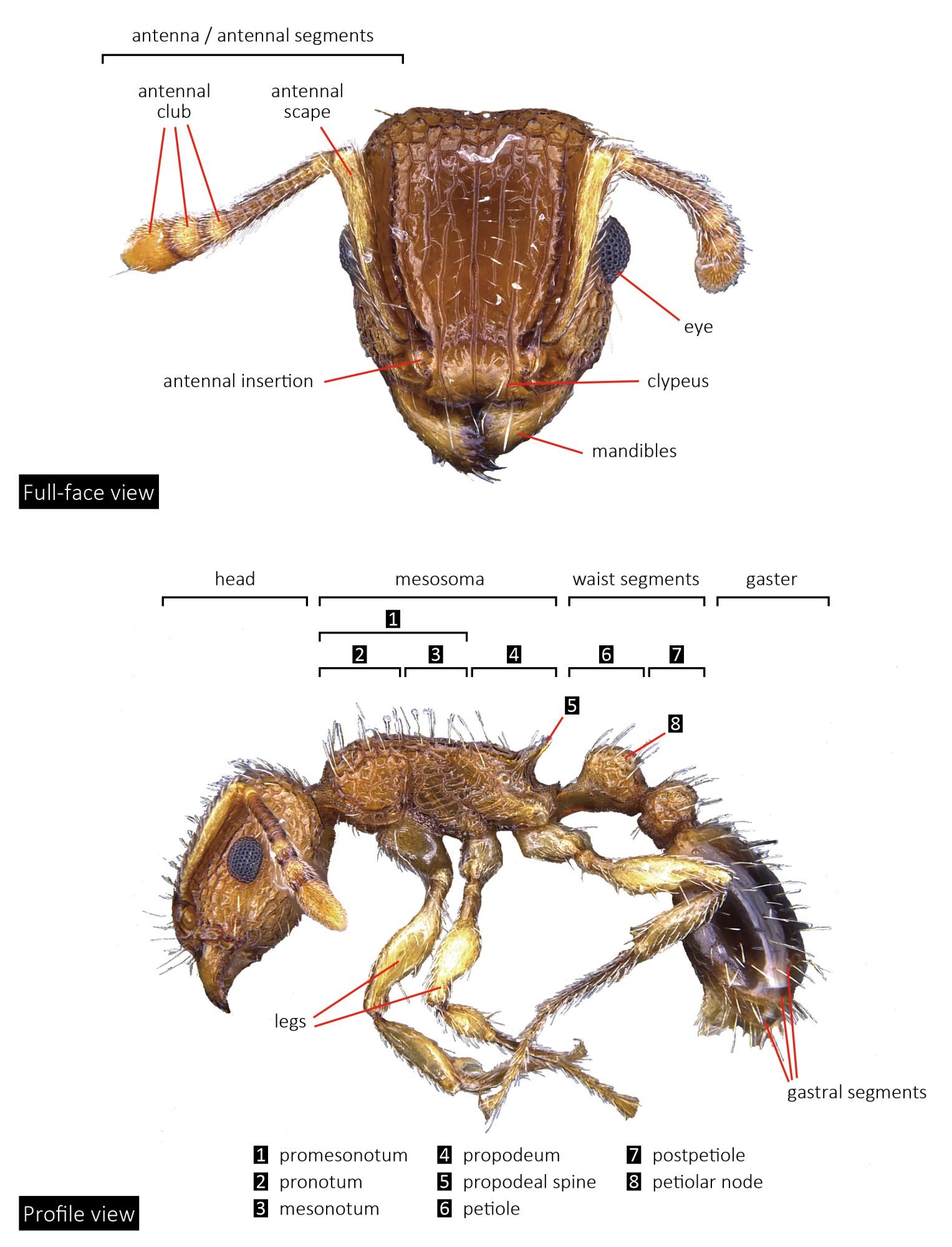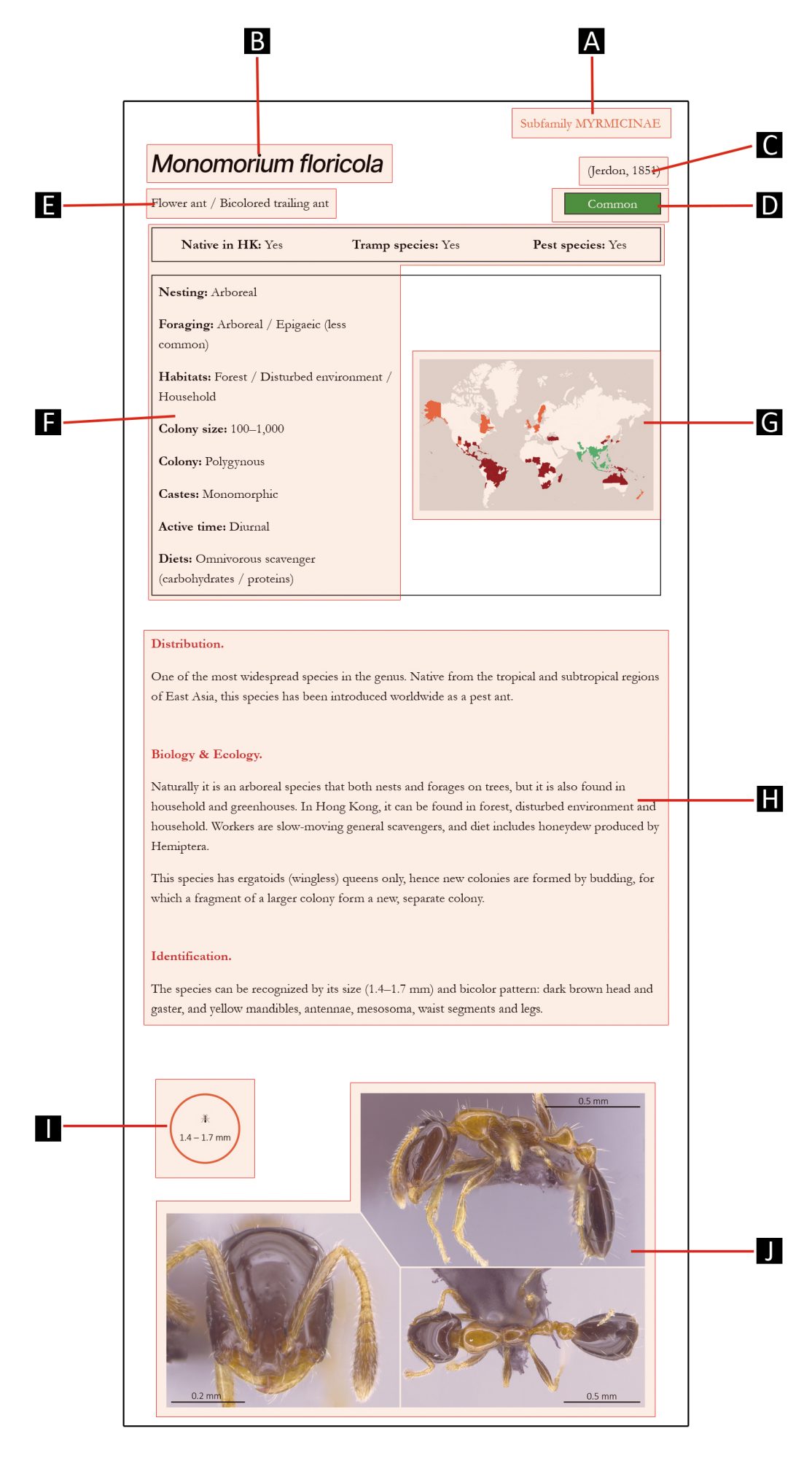
Subfamily AMBLYOPONINAE
GENUS
Prionopelta
Mayr, 1866
Distribution.
A small ant genus with 25 species described. The genus has a widespread distribution, but is mainly restricted to tropical and subtropical regions.
Biology & Ecology.
The genus is rather uncommon due to low abundance of workers and subterranean lifestyle. Individuals are rarely found above ground, with nests usually located within the soil or decaying wood. Nests are small and contain a few dozen of workers, up to a few hundred (with the maximum record of 710 individuals) and forming monogynous colonies (one queen per colony). It should be noted, however, that the biology of most species remains unknown.
Prionopelta species are predatory ants feeding on soil arthropods. Workers’ foraging activity is limited to within the soil or leaf litter of forest habitats. They walk in a ‘foot-dragging’ fashion to leave a pheromonal trail using glands located in their hind legs.
Workers reuse old cocoon fragments to ‘decorate’ galleries with pupae. Queens feed on unfertilized trophic eggs produced by workers and hemolymph (body fluid) from larvae as ants from this genus are not capable of trophallaxis (direct transfer of food between individuals). Larval hemolymph feeding is an extremely rare behavior in ants. This behavior leaves no permanent damage to the larvae and does not hinder their development into adults.
Identification.
Prionopelta species are small to very small in size (1–3 mm), with yellow to brown coloration. They can be recognized with their slender mandibles, and petiole that broadly connect with the gaster.

Species in this genus




